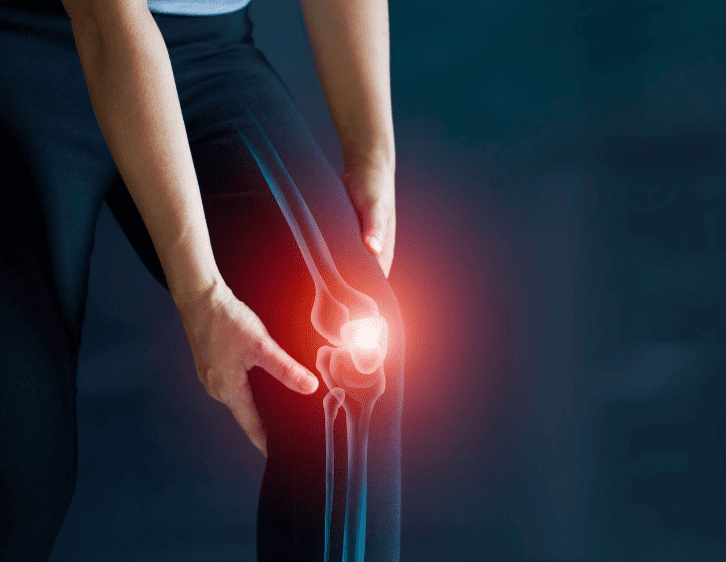Arthritis, a term that strikes fear into the hearts of many, is a pervasive and debilitating condition that affects millions of people worldwide. It’s not just one disease, but an umbrella term for over a hundred different types of joint inflammation. In this detailed guide, we’ll explore what commonly leads to arthritis.
What is Arthritis?
Arthritis is a complex and often painful medical condition that affects millions of people worldwide. It is characterized by inflammation, swelling, and discomfort in the joints of the body. The term “arthritis” encompasses over a hundred different types, each with its unique causes and symptoms. These conditions can range from the more common, such as osteoarthritis, often associated with wear and tear on the joints, to autoimmune diseases like rheumatoid arthritis, where the body’s immune system attacks its own joint tissues.
Gout, another form of arthritis, results from the accumulation of uric acid crystals in the joints, usually in the big toe, leading to intense pain. The causes of arthritis can be multifaceted, including genetic predisposition, age-related wear and tear, infections, or injuries. This diversity in causes makes understanding and managing arthritis a complex task. Nevertheless, learning more about the specific type of arthritis one may have is the first step towards effective treatment and relief.
Osteoarthritis
Osteoarthritis is the most common form of arthritis and is often labeled as “wear and tear” arthritis. This condition develops when the protective cartilage, which acts as a cushion at the ends of your bones, gradually wears away over time. The deterioration of this cartilage can be attributed to a combination of factors, with age playing a significant role.
As we grow older, the natural wear and tear on our joints become more pronounced, making us more susceptible to osteoarthritis. Genetics also have a role in this, as some individuals are genetically predisposed to the condition. Furthermore, excessive use or overuse of joints can accelerate the breakdown of cartilage, leading to the onset of osteoarthritis. The cumulative effect of these factors can result in joint pain, stiffness, and reduced mobility, which are typical symptoms of this type of arthritis. Understanding the origins of osteoarthritis helps in developing effective strategies for managing and preventing its progression.
Rheumatoid Arthritis
In contrast to osteoarthritis, rheumatoid arthritis presents a different and more intricate picture. It is classified as an autoimmune disorder, a condition where your body’s immune system goes rogue. Instead of protecting you, it mistakenly targets the synovium, which is the membrane lining the joints, launching an attack that leads to inflammation and pain. This autoimmune response is at the heart of rheumatoid arthritis, and it sets it apart from other types of arthritis.
The exact causes of rheumatoid arthritis remain a subject of ongoing research, but it is widely accepted that both genetic and environmental factors play a role in its development. Genetic predisposition can make some individuals more susceptible to the condition, as there seems to be a familial link. However, environmental factors such as infections, smoking, and even hormonal changes can act as triggers, setting off the autoimmune response in those who are genetically predisposed.
Rheumatoid arthritis often follows a pattern of joint inflammation and swelling that can lead to joint damage over time if not properly managed. Understanding the autoimmune nature of this condition is vital in designing effective treatments that can help control the immune system’s wayward attacks and alleviate the symptoms associated with rheumatoid arthritis.
Gout
Gout is a distinctive form of arthritis characterized by the painful accumulation of uric acid crystals in the joints, most commonly affecting the big toe. This condition stands out among arthritis types due to its clear connection to excess uric acid in the body.
The onset of gout is typically linked to an overproduction of uric acid or the body’s inability to efficiently eliminate it. Uric acid is a waste product created when the body breaks down purines, compounds found in various foods and the body’s cells. When uric acid levels become elevated, it can lead to the formation of needle-like crystals in the joints, triggering severe pain and inflammation.
Several factors can contribute to the development of gout. Genetics play a role, as some individuals may have a genetic predisposition to gout. Dietary choices also matter, with the consumption of purine-rich foods, such as red meat, seafood, and alcohol, often being associated with gout flare-ups. Moreover, certain medications, like diuretics, can impact uric acid levels in the body, making individuals more susceptible to gout attacks.
Ankylosing Spondylitis
Ankylosing spondylitis is a unique and often misunderstood form of arthritis that predominantly targets the spine. Unlike many other types of arthritis, which primarily affect the joints, ankylosing spondylitis focuses on the spine and its surrounding structures. This condition is characterized by inflammation that can lead to the gradual fusion of the vertebrae in the spine.
The precise causes of ankylosing spondylitis are not fully understood, but it is believed to have a strong genetic component. People with a family history of the condition are at a higher risk of developing it themselves. The genetic link is closely associated with a specific genetic marker known as HLA-B27, which is often found in those with ankylosing spondylitis.
However, genetic predisposition is just one part of the puzzle. Environmental factors, such as infections, may play a role in triggering the onset of ankylosing spondylitis in genetically susceptible individuals. These factors are thought to set off an autoimmune response, where the immune system attacks the body’s own tissues, particularly the joints and the spine.
Psoriatic Arthritis
Psoriatic arthritis stands out as a distinct and intriguing form of arthritis due to its close association with psoriasis, a skin condition that affects millions of people worldwide. This type of arthritis often emerges in individuals already grappling with psoriasis, creating a unique link between the skin and the joints.
The hallmark feature of psoriatic arthritis is its autoimmune nature. In this condition, the body’s immune system, for reasons not yet fully understood, goes awry and begins to attack not only the skin but also the joints. This autoimmune assault leads to inflammation in the joints, triggering pain, stiffness, and swelling. The connection between the skin and joints in psoriatic arthritis is a testament to the body’s complex interplay between different systems.
Both genetics and environmental factors are believed to be significant contributors to the development of psoriatic arthritis. Family history can play a role, as there is a genetic predisposition that appears to increase the risk of this condition. However, environmental factors, such as infections or trauma, can also act as potential triggers. These factors are thought to activate the autoimmune response, leading to the joint inflammation seen in psoriatic arthritis.
Treatment and Healthy Lifestyle Changes
The management of arthritis, regardless of its type, typically involves a combination of treatments and healthy lifestyle changes. These approaches aim to alleviate pain, reduce inflammation, improve joint function, and enhance the overall quality of life for individuals living with arthritis.
- Medications: One of the most common treatments for arthritis is medication. Nonsteroidal anti-inflammatory drugs (NSAIDs) like Aleve (naproxen) are often recommended to reduce pain and inflammation. These medications can provide relief but should be used under the guidance of a healthcare professional, as they may have side effects. Other prescription drugs, including disease-modifying antirheumatic drugs (DMARDs) and biologics, may be prescribed for more severe cases of arthritis, especially autoimmune forms like rheumatoid arthritis.
- Physical Therapy: Physical therapy plays a crucial role in arthritis management. A physical therapist can develop a personalized exercise program that improves joint mobility and strength. These exercises are tailored to the specific needs and limitations of the patient and can help alleviate pain and increase joint functionality.
- Lifestyle Modifications: Making healthy lifestyle changes can significantly impact the course of arthritis. Maintaining a healthy weight is essential, as excess weight can strain joints and exacerbate symptoms. A balanced diet rich in anti-inflammatory foods like fruits, vegetables, and fatty fish can help reduce inflammation. Smoking cessation is also recommended, as smoking is a known risk factor for certain types of arthritis.
- Assistive Devices: For some individuals, assistive devices such as braces, splints, or walking aids may be necessary to support joint function and reduce pain. These devices are especially valuable for those with severe arthritis affecting weight-bearing joints.
- Rest and Stress Management: Adequate rest is crucial for managing arthritis. Balancing activity with periods of rest allows the joints to recover. Additionally, stress management techniques like relaxation exercises and mindfulness can help reduce the psychological impact of chronic pain associated with arthritis.
- Heat and Cold Therapy: The application of heat or cold to affected joints can offer relief from pain and stiffness. Heat can relax and soothe sore muscles and joints, while cold can reduce inflammation and numb pain.
- Surgical Interventions: In cases where arthritis causes significant joint damage and other treatments are ineffective, surgical options such as joint replacement surgery may be considered.
It’s important to note that the management of arthritis is highly individualized. What works for one person may not work for another, and the approach may vary depending on the type and severity of arthritis. Working closely with a healthcare provider to develop a personalized treatment plan is crucial for effective arthritis management. In this way, individuals with arthritis can find relief and enhance their quality of life, allowing them to continue enjoying the activities they love.
For inquiries about our products please call us or send us a message on our Chat box. You can also send us a message on our Facebook page.


















